For many gardeners, the dream of plucking sun-ripened tomatoes straight from the vine can seem elusive when space is limited. Whether you’re a beginner with a balcony or a seasoned gardener with a compact urban yard, the good news is that growing tomatoes in small spaces is not only possible, it’s delightfully rewarding.
Tomatoes are one of the most beloved home-grown vegetables, cherished for their vibrant flavor and versatility in the kitchen. In this article, you’ll discover practical techniques and creative solutions to cultivate juicy, flavorful tomatoes even when your gardening area is confined.
We’ll explore the best tomato varieties for small spaces, as well as container gardening tips to maximize your harvest. By the end, you’ll be equipped with the knowledge to transform your tiny plot into a thriving tomato oasis, no matter your level of experience.
Select Compact Tomato Varieties
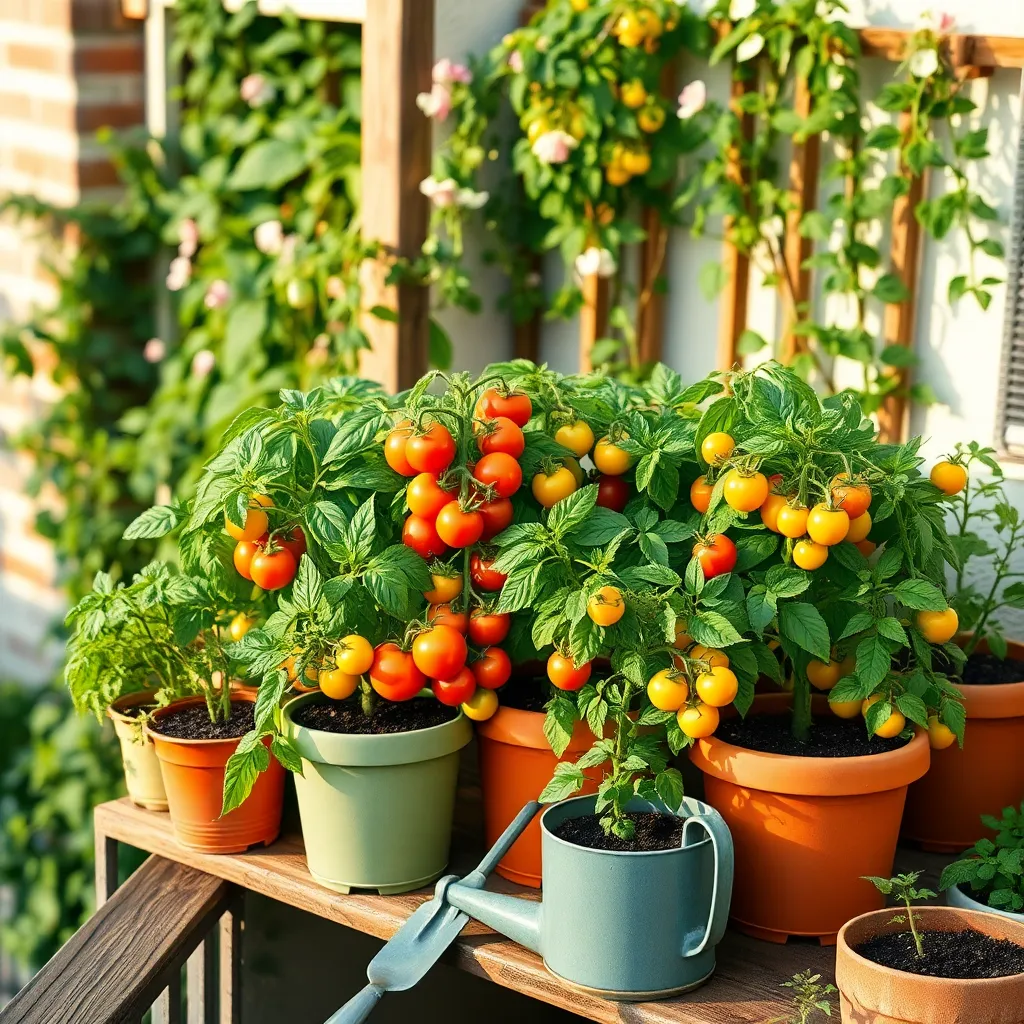
When gardening in small spaces, choosing the right tomato variety is crucial for success. Opt for compact or determinate tomato varieties that are bred to thrive in limited areas and containers.
Varieties like ‘Tiny Tim’ and ‘Patio Princess’ are perfect for small gardens, as they grow to a manageable size without sacrificing yield. These types typically reach a height of about 2 feet, making them ideal for balconies or small patios.
For those looking for a sweet, cherry-sized option, consider ‘Tumbling Tom’. This variety is particularly suited for hanging baskets, allowing you to maximize vertical space while enjoying a bountiful harvest.
Ensure your soil is rich and well-draining, using a mix that contains peat moss, perlite, and compost for optimal growth. Water your compact tomatoes consistently, aiming for a deep soaking once or twice a week, depending on your local climate.
Advanced gardeners can experiment with self-watering containers to maintain consistent moisture levels, which is crucial in small-space gardening. Using a liquid fertilizer every two weeks will also promote healthy growth and fruiting in these compact varieties.
Pruning is not typically necessary for determinate varieties, which makes them low-maintenance. However, regular inspection for pests and diseases ensures your plants remain healthy and productive throughout the growing season.
Prepare Containers with Drainage
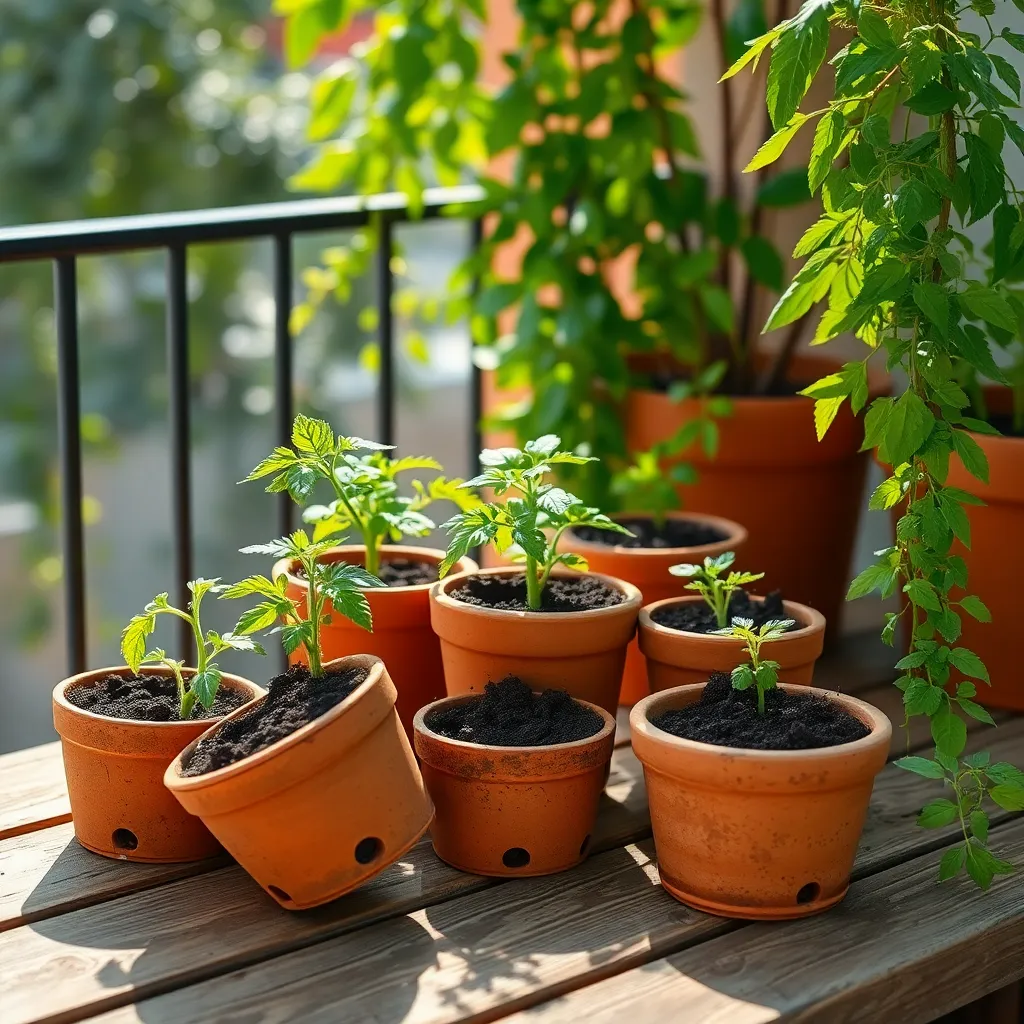
To grow tomatoes successfully in small spaces, it is vital to prepare containers with effective drainage. Begin by choosing containers that have drainage holes at the bottom, as this prevents water from accumulating and causing root rot, a common issue in container gardening.
For the best results, use a high-quality potting mix specifically designed for containers, as it will provide the necessary aeration and nutrients. Mix in some perlite or coarse sand to improve drainage further, ensuring your tomato plants thrive by receiving the right balance of moisture and oxygen.
Consider placing a layer of small stones or broken pottery at the bottom of your container to enhance drainage. This layer will help excess water escape efficiently, keeping your tomato plant’s roots healthy and preventing diseases associated with overwatering.
Remember to water your tomato plants consistently but avoid waterlogging, which can be detrimental to their growth. Aim to keep the soil evenly moist, checking regularly by inserting your finger about an inch into the soil; water if it feels dry at this depth, as this is a reliable method to ensure your tomatoes get the moisture they need without overwatering.
Use Quality Potting Mix
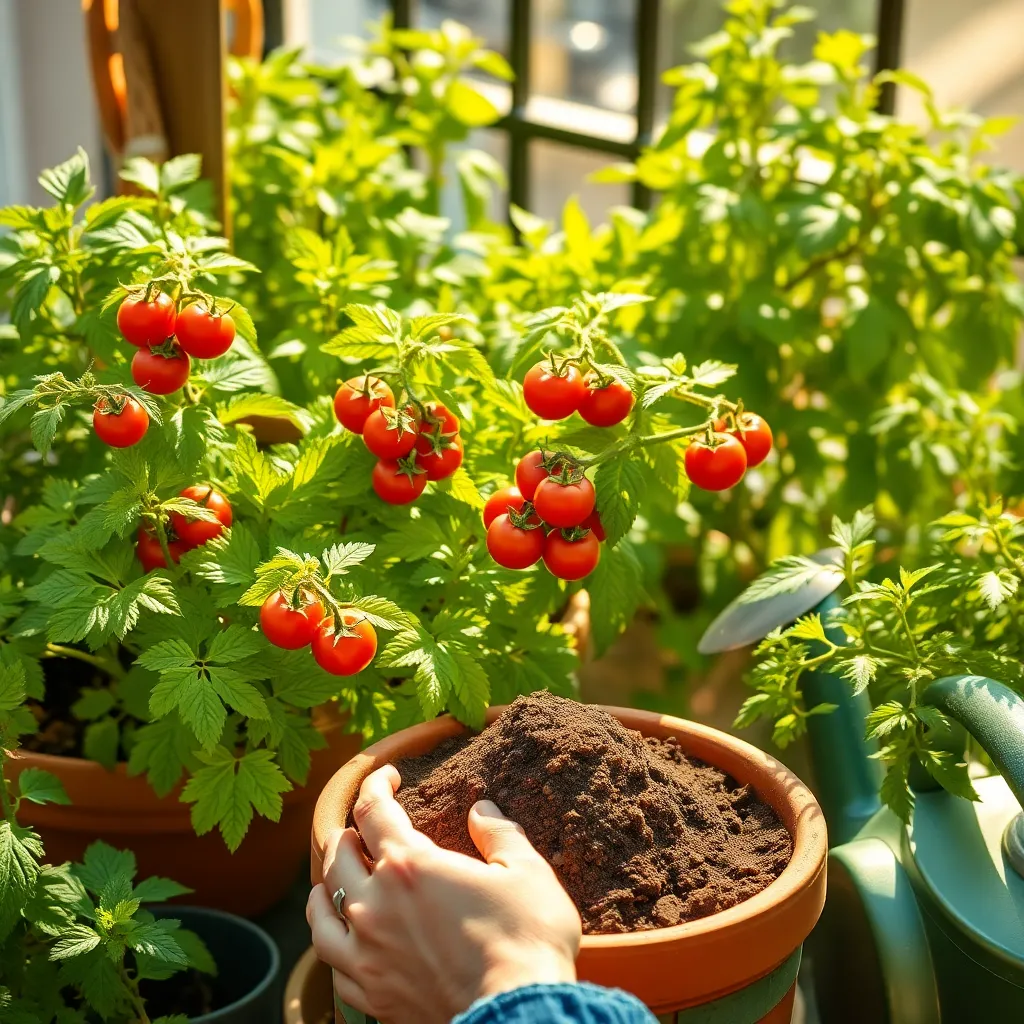
To ensure your tomato plants thrive in small spaces, using a quality potting mix is essential. A good potting mix provides the necessary nutrients, aeration, and drainage tomatoes need to grow robustly in containers.
Look for a potting mix that is specifically formulated for vegetables or contains a balanced mix of peat moss, perlite, and compost. These components help retain moisture, provide proper drainage, and offer essential nutrients for your tomato plants.
For those just starting with gardening, pre-mixed potting soils are widely available and often contain added fertilizers to jumpstart growth. Experienced gardeners might prefer to create their own mix, adding slow-release fertilizers or organic amendments like worm castings for an extra nutrient boost.
It’s important to keep the soil consistently moist but not waterlogged, especially when using potting mixes with high peat content. Water your plants deeply once the top inch of the soil feels dry, promoting strong root development and healthy growth.
Position for Maximum Sunlight
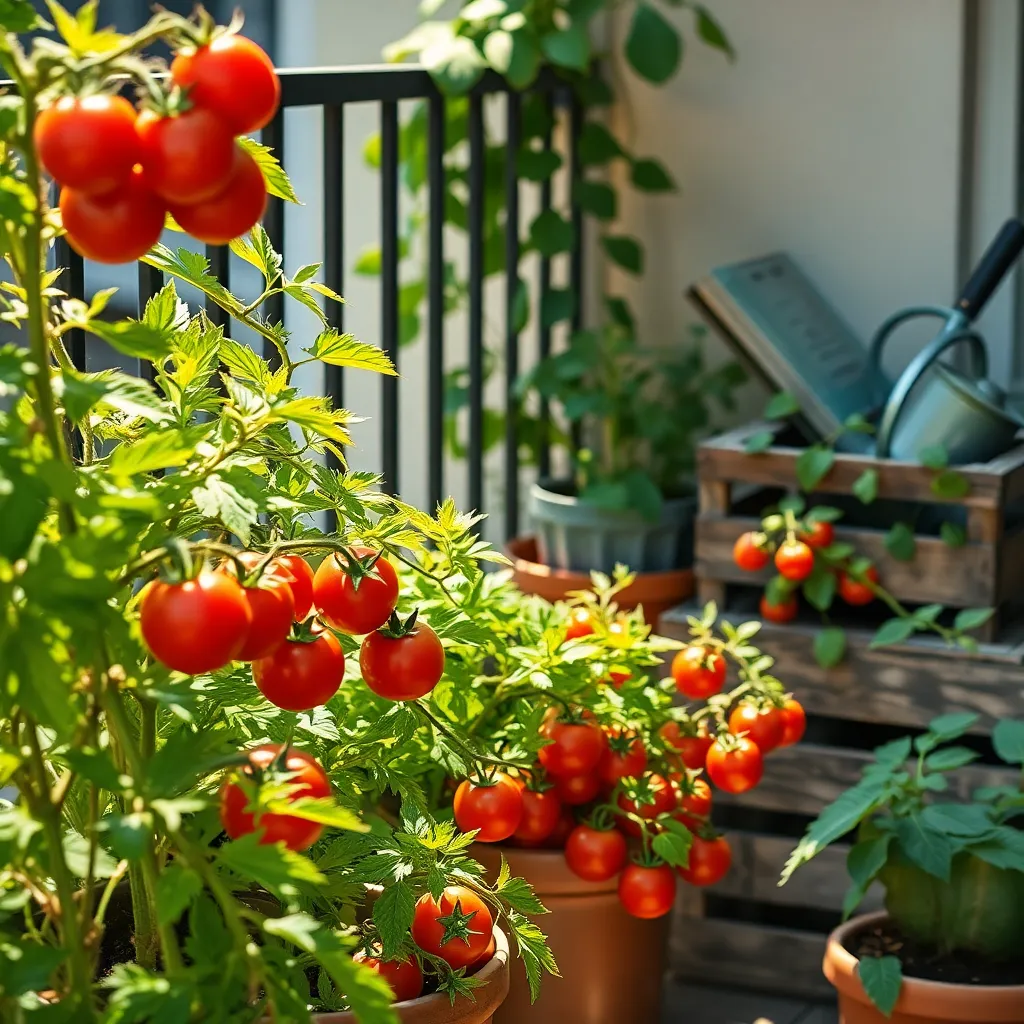
Positioning your tomato plants for maximum sunlight is crucial in small spaces. Tomato plants thrive with at least six to eight hours of direct sunlight each day, which enhances their growth and fruit production.
To ensure they receive ample light, place your containers or pots on a south-facing balcony or windowsill. If your space is limited, consider using reflective surfaces or grow lights to supplement natural sunlight, especially in less sunny regions.
Moving your pots periodically can maximize sun exposure throughout the day. This simple technique can optimize light capture, ensuring your tomato plants receive consistent energy for photosynthesis.
Advanced gardeners might explore vertical gardening techniques to maximize sunlight in compact areas. Using trellises or cages can help increase exposure by elevating the plants and minimizing shadowing from other elements.
Implement Efficient Watering Techniques
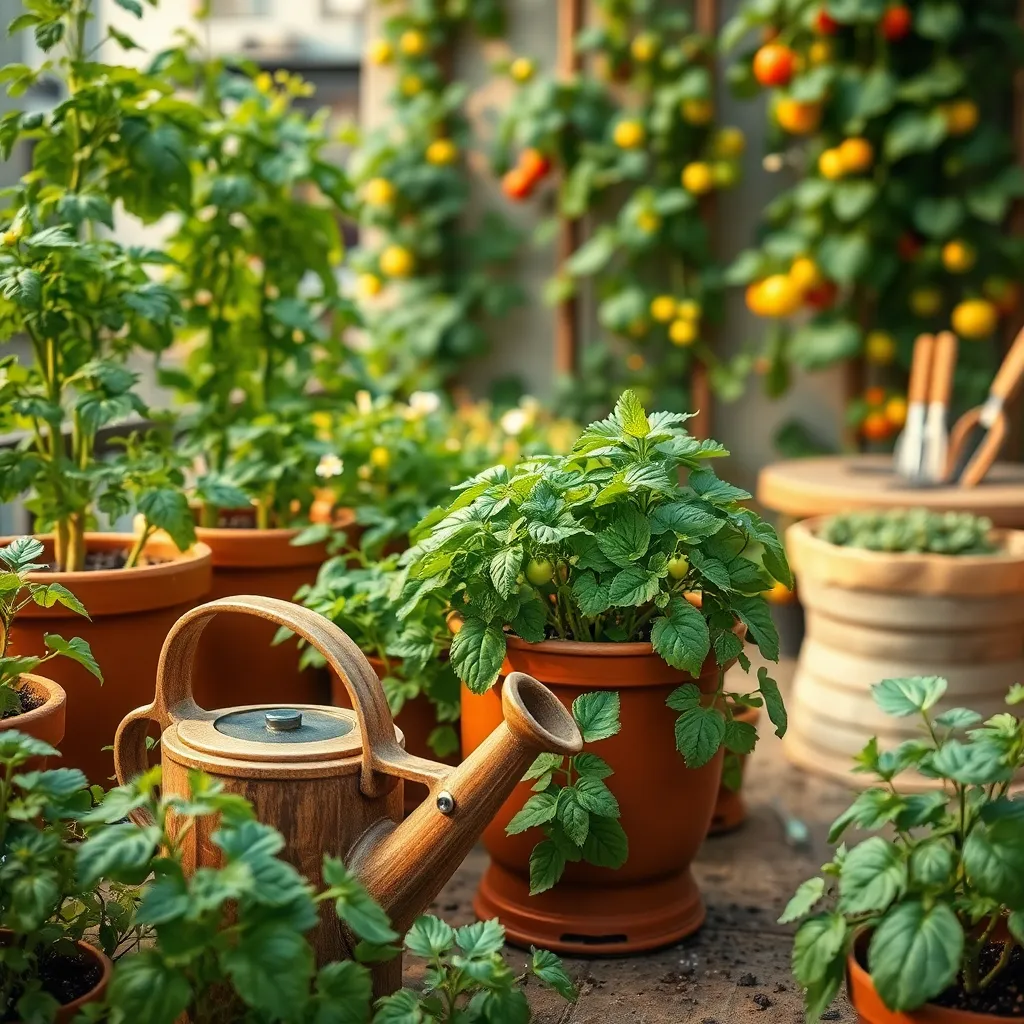
Effective watering is crucial when growing tomatoes in small spaces, as it helps prevent common issues like root rot and blossom end rot. Aim to keep the soil consistently moist but not waterlogged, which is best achieved by checking the top inch of soil before watering.
Drip irrigation systems are a great investment for small-space gardening because they deliver water directly to the plant’s roots, minimizing waste and evaporation. If a drip system isn’t feasible, consider using a watering can with a narrow spout to apply water directly to the base of each plant.
Mulching is an excellent technique to retain moisture in the soil, reducing the need for frequent watering. Apply a layer of organic mulch, such as straw or shredded leaves, around the base of your tomato plants to help conserve water and suppress weeds.
Water your tomatoes in the morning to help prevent diseases that thrive in damp conditions, like powdery mildew. This timing allows leaves to dry quickly in the sunlight, further reducing the risk of fungal issues and keeping your plants healthy.
Conclusion: Growing Success with These Plants
As we’ve explored, nurturing relationships, much like growing tomatoes in small spaces, requires creativity, attention, and care. First, understanding the importance of communication is akin to selecting the right soil; it sets the foundation for growth. Second, embracing adaptability allows you to navigate tight corners, much like finding innovative ways to plant in limited spaces. Third, prioritizing quality time, much like watering your plants consistently, ensures that your relationship remains vibrant and healthy. Fourth, embracing patience during challenging times resembles waiting for tomatoes to ripen—it’s key to harvesting the rewards. Finally, celebrating small victories strengthens your bond, just as enjoying the first ripe tomato validates your efforts.
For an actionable next step, choose one concept to focus on this week—whether it’s scheduling a heartfelt conversation or planning a small celebration. Let this be your starting point for transformation. As you embark on this journey, bookmark this article as your guide to nurturing a flourishing relationship.
Remember, successful relationships, like a thriving garden, are built on consistent care and attention. With dedication and love, your relationship can blossom beyond the constraints of any space. Save this article as a reminder of the possibilities ahead, and let it inspire your path to lasting connection and growth.
